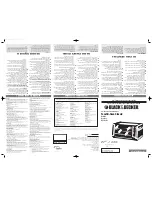
The appliance may be installed in any room but refer to the
requirements of the current IEE Regulations and, in Scotland, the
relevant electrical provisions of the Building Regulations with
respect to the installation of appliances in rooms containing baths
or showers. In Eire refer to the ETCI rules for electrical installations.
Where a room sealed appliance is installed in a room containing
a bath or shower, any switch or appliance control using mains
electricity must NOT be able to be touched by a person using the
bath or shower. The IP rating of the appliance may only allow it
to be located in specific 'zones'. Refer to, in GB, Electrical
Regulations 16th Edition (BS7671).
The appliance is NOT suitable for external installation
No special wall protection is required. The wall must be able to
support the weight of the appliance. Refer to Table 4.
The specified clearances must be available for installation and
servicing. Refer to Table 8.
The appliance can be installed in a cupboard/compartment to
be used for airing clothes providing that the requirements of
BS6798 and BS5440 Part 2 are followed. Refer to Section 2.5.
The clearance between the front of the appliance and the
cupboard or compartment door should be not less than 25mm.
The airing space must be separated from the boiler space by a
perforated non-combustible partition.
Expanded metal or rigid wire mesh is acceptable provided that
the major dimension is less than 13mm.
Notwithstanding the instructions given in BS 5440:2, these
appliances can be fitted in a compartment with no vents as long
as the clearances specified in Table 8 are maintained.
LPG Installation. Refer to Section 1.9.
The flue system must be installed following the requirements of
BS5440: 1. In Eire the flue terminal must be sited as described in
in Table 5 of the current edition of IS813.
Standard horizontal flue kit length is 265 – 725mm with
extension kits for flues up to 3m.
The terminal must not cause an obstruction or the combustion
products a nuisance. Under some conditions the terminal might
emit steam and positions where this might be a nuisance should
be avoided. Refer to Fig 6.
If the terminal is less than 2m above a surface to which people
have access then a guard must be fitted. The guard must be
evenly spaced about the terminal and fixed with plated screws.
A Type K2 guard is available from Tower Flue Components, Vale
Rise, Tonbridge, TN9 1TB.
A vertical flue kit is available giving a maximum height of 4.1m
including the flue terminal assembly.
Refer to the separate vertical flue system booklet.
5. Flue terminal positions
4. Siting The Appliance
8
K
H
H
A
G
C
D,E.
J
N
Q
F
P
Q
B
I
L
N
N
M
M
Q
I
Fig. 6. Siting of the flue terminal.
TERMINAL POSITION
MIN. DISTANCE
A
a
– Directly below an opening, air brick,
opening windows etc.
300 mm
B– Above an opening, air brick,
opening windows etc.
300mm
C– Horizontally to an opening, air brick,
opening windows etc.
300mm
D– Below gutters, soil pipes or drain pipes.
75mm
E– Below eaves.
200 mm
F– Below balconies or car port roof (lowest point).
200 mm
G– From a vertical drain pipe or soil pipe.
150 mm
H– From an internal or external corner.
300 mm
I– Above ground, roof or balcony level.
300 mm
J– From a surface facing the terminal.
600 mm
K– From a terminal facing the terminal
1200 mm
L– From an opening in a car port (e.g. door
window) into dwelling.
1200 mm
M– Vertically from a terminal on the same
wall.
1500 mm
N– Horizontally from a terminal on the same
wall.
300 mm
O– From the wall on which the terminal
is mounted
N/A
P– From a vertical structure on the roof
N/A
Q– Above intersection with roof
NOTE
N/A = Not applicable
a
In addition, the terminal should be not nearer than 150mm (fanned draught) to an opening
in the building fabric formed for the purpose of accommodating a built-in element such as a
window frame.
Not recommended
b
b
See Vertical Flue
Instructions









































